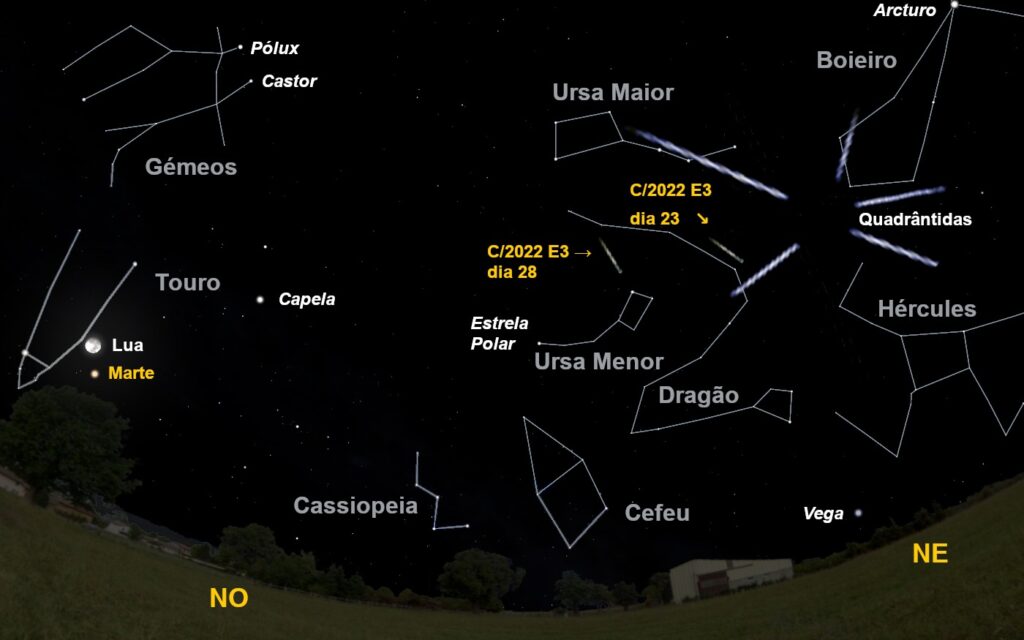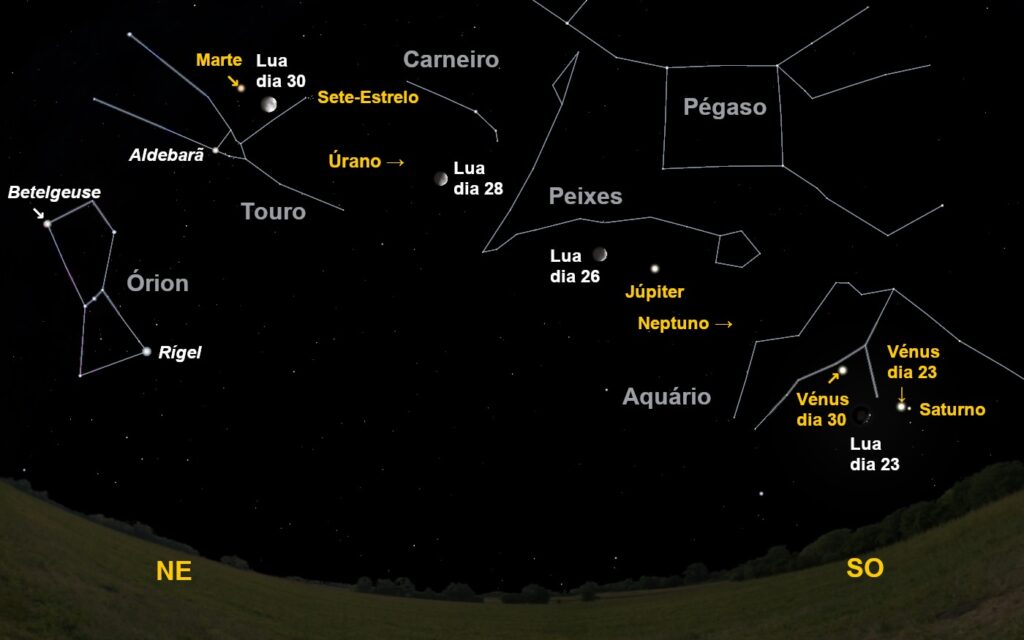This year has the peculiarity of starting with all the planets of the solar system above the horizon at dusk. However, these days, Mercury is so close to the direction of the Sun that it will not allow a good observation of this planet.
On the first night of the year, the Moon passed in a direction so close to that of the planet Uranus that, in the UK and northern Europe, anyone with binoculars or a small telescope (this planet is not visible to the naked eye) could witness the occultation. of Uranus by the Moon.
In Portugal, the first significant ephemeris will take place on the third dawn of 2023, when the Moon passes close to the Pleiades star cluster (the famous Sete-Estrelo).
At the beginning of the following night, the Moon will be so close to the direction of the planet Mars that, in Southern Africa, Mars will be occulted by the Moon. Another similar occultation will take place at dawn on the 31st, but this one will only be visible in Central America and the Caribbean.
At dawn on the 4th, the activity peak of the stars rain Quadrantids, small rocks and dust thought to have been released by asteroid 2003 EH1, which was once a comet.
Although they can appear anywhere in the sky, they all appear to radiate from a part of the sky (the radiant) once occupied by the constellation of the Wall Quadrant, a constellation created in 1795 but not currently recognized by the International Astronomical Union.
As star showers Quadrantids tend to be particularly strong, being able to overcome hundreds of meteors per hour at their peak of activity. However, this year, the peak of activity falls too close to the Full Moon (already on the 6th), and it is expected that the number of meteors observed will be an order of magnitude lower than normally predicted.
This same Wednesday, the Earth reaches its perihelion, the point of its closest orbit to the Sun. However, as the northern hemisphere is facing away from the sun, in our country we will continue with the short and cold days characteristic of winter.
On the night of the 14th to the 15th, the Moon will be seen next to the star Espiga in the constellation of Virgo. This same dawn, the Moon will present itself in its waning phase. In turn, the New Moon will coincide with the arrival of the Moon at perigee (point of its orbit closest to Earth), on the night of the 21st.
On the 22nd, the conjunction (closest approximation in the firmament) of the planets Venus and Saturn will take place slightly to the left of the Moon. But the Moon's closest approach to these planets will take place shortly afterwards, but with these stars already below the horizon.
At dawn on the 26th, the Moon will have approached the planet Jupiter, which, these days, is in the constellation of Pisces.
On the 29th, the 25th anniversary of the international agreement for the development, operation and occupation of the International Space Station will be celebrated. This structure illustrates well what humanity can achieve when, instead of fighting each other, it decides to work together.
At dawn on the 30th, the Moon will pass through the Pleiades star cluster again. Also this morning, the planet Mercury reaches its greatest elongation (or departure from the direction of the Sun) to the west. For early risers, this is an excellent opportunity to observe Mercury before dawn, as it is one of the occasions when this planet appears higher in the sky.
These days, the inner solar system is being visited by comet C/2022 E3. It is expected that, at the end of this month, the brightness of this comet will reach the threshold of what can be seen with the naked eye, being the last opportunity that we will have in a very long time to observe it (more precisely about fifty thousand years, corresponding to the orbital period of this comet ).




















Comments